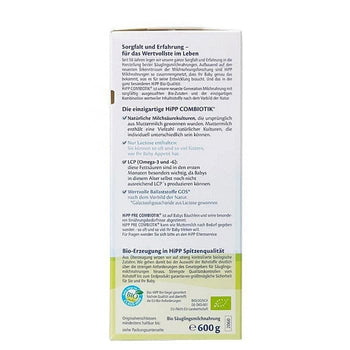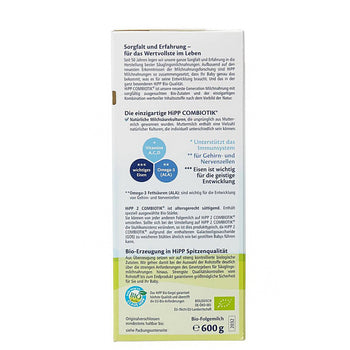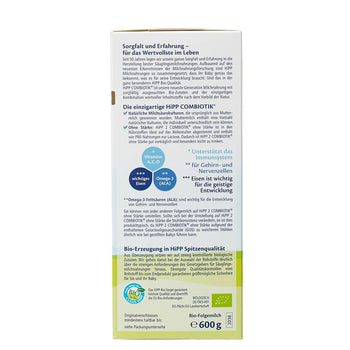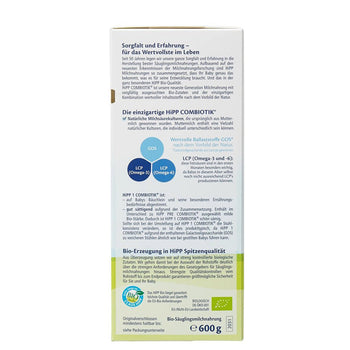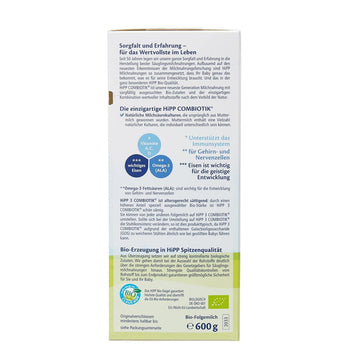The comparison of HiPP, Holle and Loulouka
Finding the right information to make an educated decision can be a challenge.
Long ingredient lists can be intimidating even when choosing between two great options. This comparison seeks to clarify the differences between HiPP Dutch and Holle formulas and help you decide which formula is best for your baby.
- EU Certified Organic
HiPP Dutch, Holle Bio, Loulouka formula are all EU certified organic. An EU Organic Certification means the formula is free from some of the most harmful ingredients found in non-organic options. Gain confidence from knowing that Loulouka, Holle and HiPP EU Certified organic products guarantee the following:
- No GMOs are used
- No Steroid, Hormoons or Antibiotics
- A minimum of 95% organic agricultural ingredients
In addition, the animals are well cared for on EU Certified Organic farms. The cows are fed with 100% organic feed and are never given synthetics to encourage growth or production.
Kendamil is the only infant formula made in the United Kingdom. Built on over 58 years’ expertise in infant nutrition and located in the heart of the English Lake District, a UNESCO World Heritage Site, Kendamil has both EU and the British Soil Association certifications for its organic status.
- Carbohydrates
Carbohydrate source is one of the most important criteria to consider when choosing an infant formula. Lactose is the main carbohydrate found in breast milk, and it is the best option for sugar in baby formula.
Lactose serves as a great energy source for babies, supporting their physical and mental development, maintaining good gut bacteria, and aiding the absorption of calcium. Infants are born with the ability to produce the lactase enzyme, allowing them to easily digest lactose.
The European Commission requires that 30% of carbohydrates in baby formulas come from lactose, while the US has no standard for lactose amounts. In fact, whereas sucrose is banned in European formulas, many US formulas use cheaper, more processed sugars (such as sucrose) instead of lactose.
Some formulas also contain organic maltodextrin—a relatively tasteless complex carbohydrate derived from starch. Although maltodextrin does have a higher glycemic index than lactose, the small quantities included in these formulas are safe for infants. In fact, it helps balance out the sweetness of cow's milk or goat's milk. It also thickens formulas and releases energy more slowly than simple carbohydrates, so babies can feel full longer.
Holle
Holle Bio Stage PRE is an entirely lactose-based formula. Holle Bio (Stage 1 and Stage 2) use a combination of lactose and maltodextrin as carbohydrate sources.
HiPP
All HiPP Dutch formulas are entirely lactose-based, with the exception of HiPP Anti-Reflux formula, which also contains maltodextrin. The addition of maltodextrin can help ease digestion for those with sensitive tummies.
Loulouka
Unless your baby has lactose intolerance, lactose is the best primary carbohydrate that a baby formula can include. Cheaper, processed substitutes for lactose include: corn syrup, glucose syrup solids, sugar, brown rice syrup, sucrose, etc.
Loulouka uses 100% lactose for their carbohydrate, meaning parents are getting the best carbohydrate for their babies.
- Proteins
Protein is crucial in a baby's diet, and it’s important that infants receive the right kind of protein. Breast milk contains 40% casein proteins and 60% whey proteins, while cow's milk is comprised of 80% casein and 20% whey. Casein proteins can be more difficult for little infant tummies to digest, which is why it's important to look for a formula that lists whey as an ingredient. This tells you that the protein ratio has been adjusted to mimic that of breast milk.
Some formulas contain 100% whey for sensitive tummies, and others include protein hydrolysates, which break down these proteins for babies who struggle to do this on their own.
Holle
All Holle baby formulas have added whey to bring the protein ratio to a healthy balance for babies.
HiPP
Similar to Holle, most HiPP Dutch formulas have a protein ratio that resembles what you find in breast milk. HiPP also offers an Anti-Reflux formula (100% whey), as well as HiPP Hypoallergenic (Stage PRE, Stage 1, and Stage 2), which contain protein hydrolysates. These hypoallergenic formulas are not 100% organic because the hydrolyzed milk protein is not available in organic form. However, all other ingredients are organic, and for babies with sensitivities or allergies, it may be just what they need to quiet those little distressed digestive systems.
Loulouka
All Loulouka have added whey to the formula, which is less likely to cause allergies.
- Fat
Holle
Holle Cow: Holle does contain palm oil, which is controversial because some babies react poorly to it. If your infant has an upset stomach or unusual stools, you may want to use Loulouka (which doesn't contain palm oil).
Holle Goat: the new version 2020 of Holle Goat doesn't contain palm oil, instead it now replaced with rapeseed oil and sunflower oil
Holle Bio Stage PRE stands out compare to other formulas because a significant proportion of its fat content comes from Demeter-certified whole milk fat, with a smaller proportion from vegetable oils.
HiPP
Hipp Organic formula has palm oil as one of its fat ingredients. It is an organic ingredient that is sustainably sourced. As a provider of organic foods in Europe, Hipp must adhere to the strict rules of organic guidelines, and Hipp is known to exceed those expectations.
The palm oil in Hipp formula is not the only source of fat for babies. It also has a combination of organic vegetable oils in all of their formulas including: rapeseed oil and sunflower oil.
Loulouka
Most organic regulated formula’s fat source originates from vegetable oils, including palm oil. However, Loulouka uses coconut oil as the primary fat source, which also helps in making it very close to breastmilk in composition (with 15.8% palmitic acid). Coconut oil also has a high concentration of medium chain triglycerides, which helps with absorption, and the composition of saturated fatty acids in coconut oil is similar to breastmilk (43% vs. 38% in breastmilk).
- Prebiotics & Probiotics
Breast milk contains both prebiotics and probiotics, which boost the beneficial gut bacteria in a baby's digestive tract and strengthen the immune system. Prebiotics are a food source for probiotics. Probiotics aid in digestion, reduce colic, prevent eczema, and improve immune response.
Holle
Holle formulas do not contain prebiotics or probiotics, as they maintain a simple, short list of ingredients. However, you can purchase pre- and probiotic supplements that can be added to formulas.
HiPP
All HiPP Dutch, HiPP Hypoallergenic, Anti-Reflux and Comfort contain both prebiotics and probiotics.
Loulouka
All Loulouka formula has prebiotics added to help with developing healthy bacteria in your baby’s gut.
- DHA & ARA
Omega-3 fatty acids (such as ALA & DHA) and Omega-6 fatty acids (like ARA) are instrumental in the development of a baby's brain, nerve, vision, and immune systems. These ingredients are not required to be in formulas produced in the US. Beginning in 2020, DHA will be a required component of all European-made infant formulas.
Holle
Now, all newly-produced Holle formulas contain DHA derived from fish oil (Holle’s cow’s milk formula) or algae (Holle’s goat’s milk formulas). These formulas now display the quantities of DHA, alpha linoleic acid (ALA, an omega-3 fatty acid) and linoleic acid (LA, an omega-6 fatty acid) that they contain on their product labels.
HiPP
All of our HiPP formulas provide sources for ARA and all stage HiPP formulas contain DHA as well. These long-chain polyunsaturated fatty acids have been safely derived from fish oil or vegetable oil.
Loulouka
Loulouka’s new formulation has DHA from Fish Oil added! That means that no hexane is used to extract the DHA.
https://www.hipphollehouston.com/shop/kendamil-cereal/8















